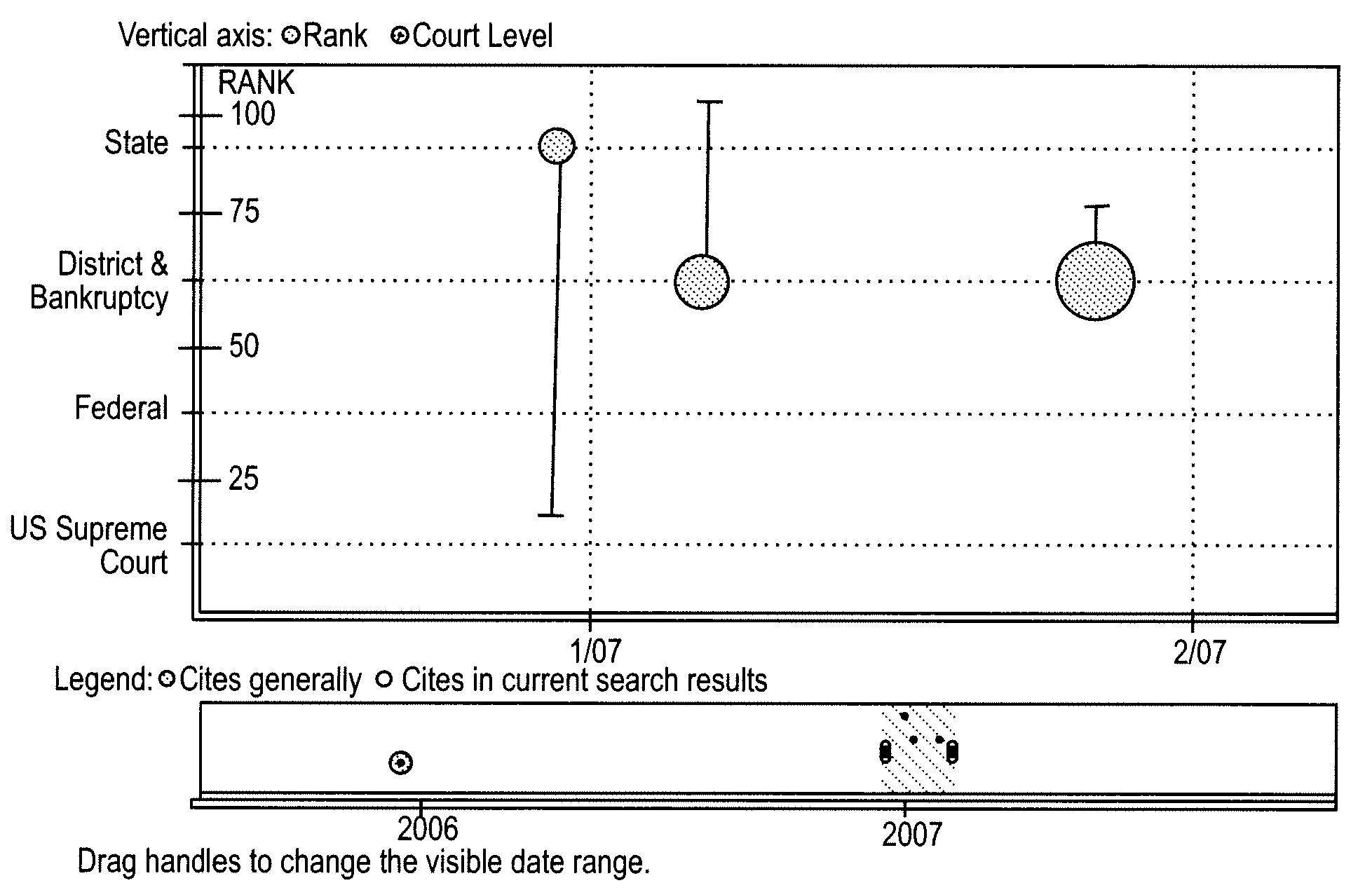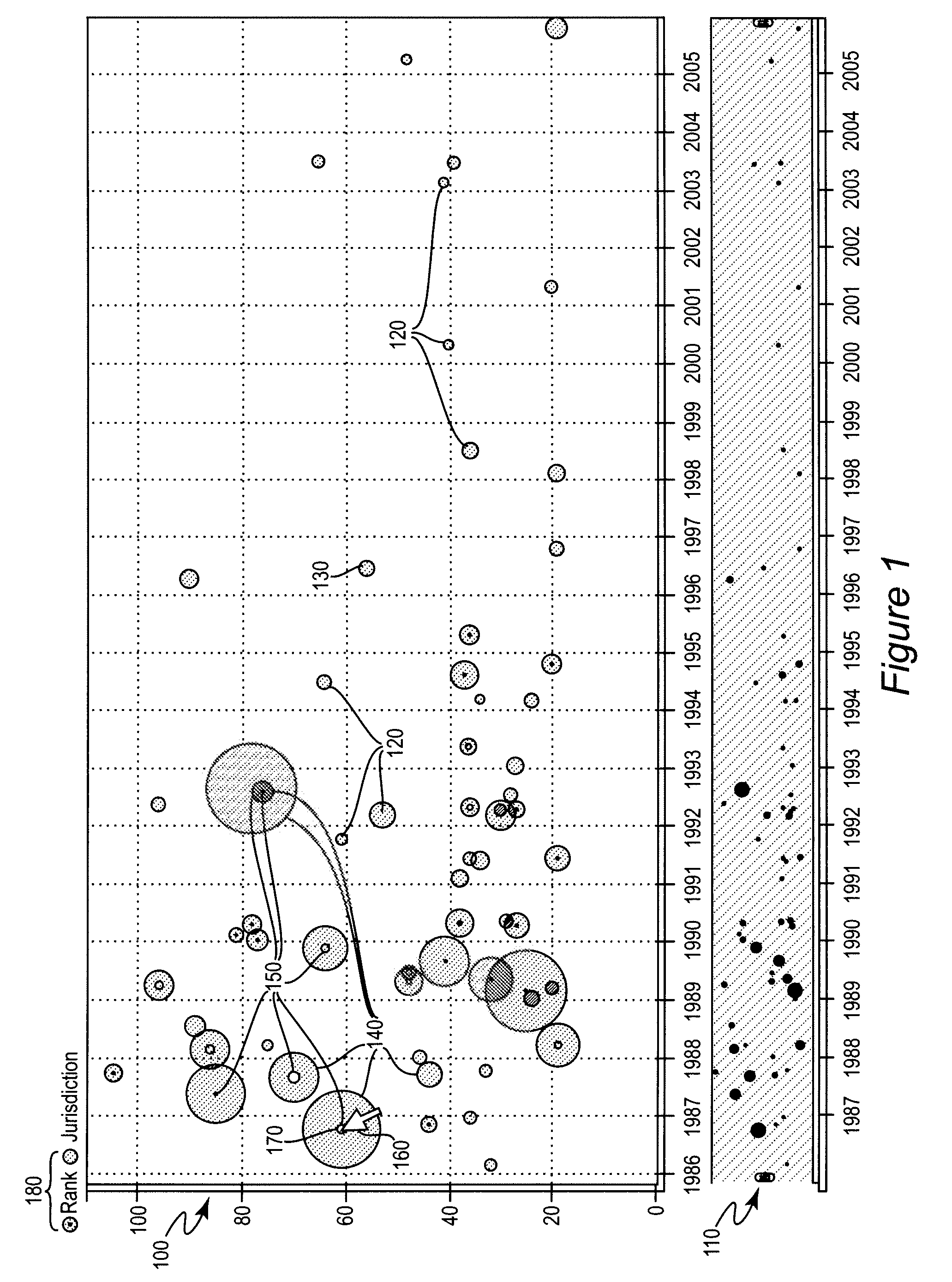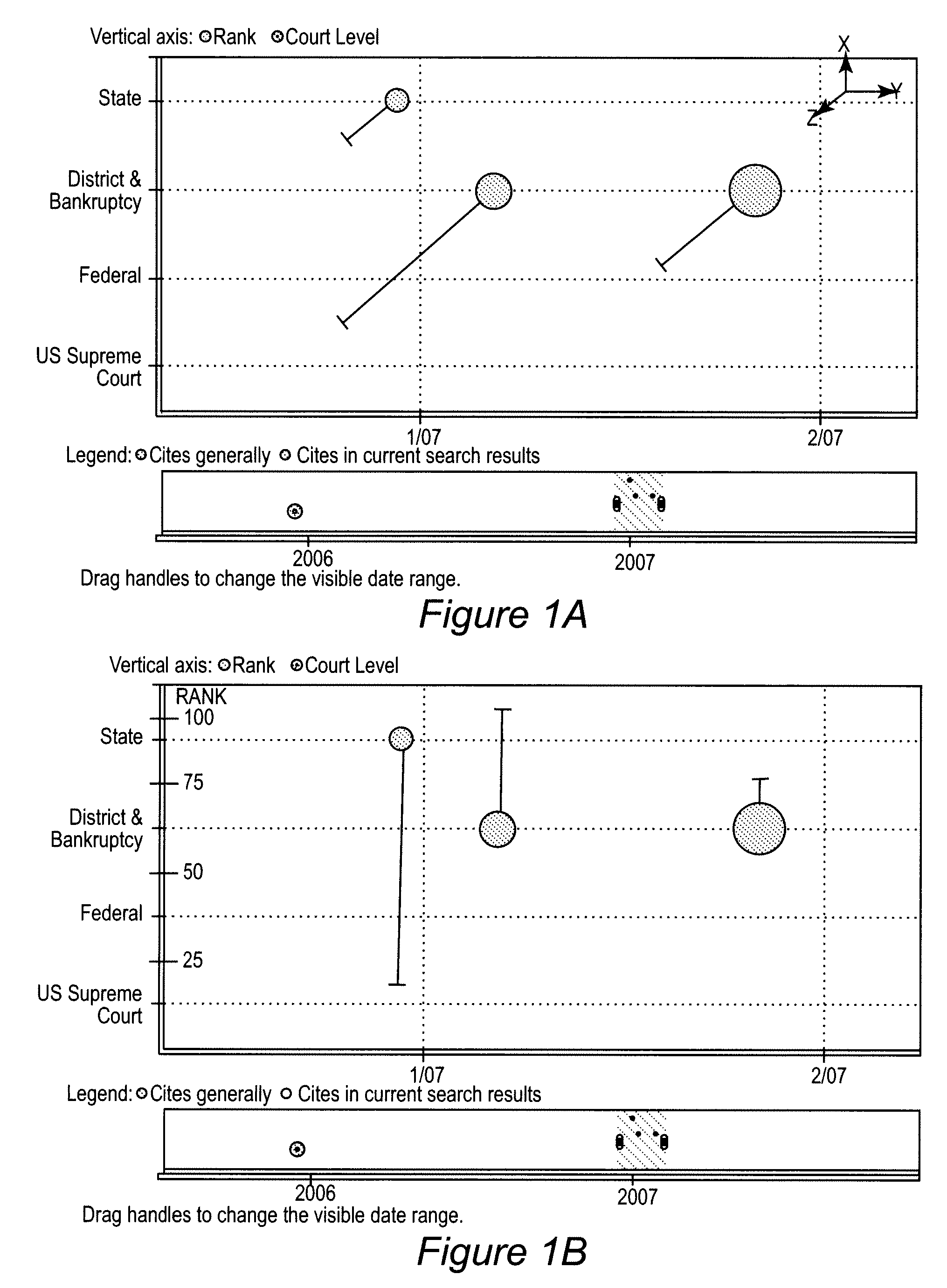Interface Including Graphic Representation of Relationships Between Search Results
a graphic representation and search result technology, applied in the field of database data processing, can solve the problems of high probability of exclusion of the article or document actually sought by any limitation, marginal effectiveness, and the number of search results themselves, and achieve the effect of facilitating review
- Summary
- Abstract
- Description
- Claims
- Application Information
AI Technical Summary
Benefits of technology
Problems solved by technology
Method used
Image
Examples
Embodiment Construction
[0019]Referring now to the drawings, and more particularly to FIG. 1, there is shown a representation of an exemplary interface screen in accordance with the invention. As noted above, search engines and algorithms have become quite sophisticated and many, such as that disclosed in the above-incorporated U.S. patent application Ser. No. 09 / 707,911, are capable of carrying out statistical analyses on the text and other content of a document, article or published decision to make an estimate of relative degree of match to a search query. Such statistical studies may be based on a wide variety of features of the individual items being searched such as the number of times particular search terms appear, the proximity / separation of search terms in the text and various aspects (e.g. number, proximity, relationships, and the like) in regard to citations to previous documents, articles and / or published decisions.
[0020]As disclosed in the above-incorporated patent application Ser. No. 09 / 707...
PUM
 Login to View More
Login to View More Abstract
Description
Claims
Application Information
 Login to View More
Login to View More - R&D
- Intellectual Property
- Life Sciences
- Materials
- Tech Scout
- Unparalleled Data Quality
- Higher Quality Content
- 60% Fewer Hallucinations
Browse by: Latest US Patents, China's latest patents, Technical Efficacy Thesaurus, Application Domain, Technology Topic, Popular Technical Reports.
© 2025 PatSnap. All rights reserved.Legal|Privacy policy|Modern Slavery Act Transparency Statement|Sitemap|About US| Contact US: help@patsnap.com



